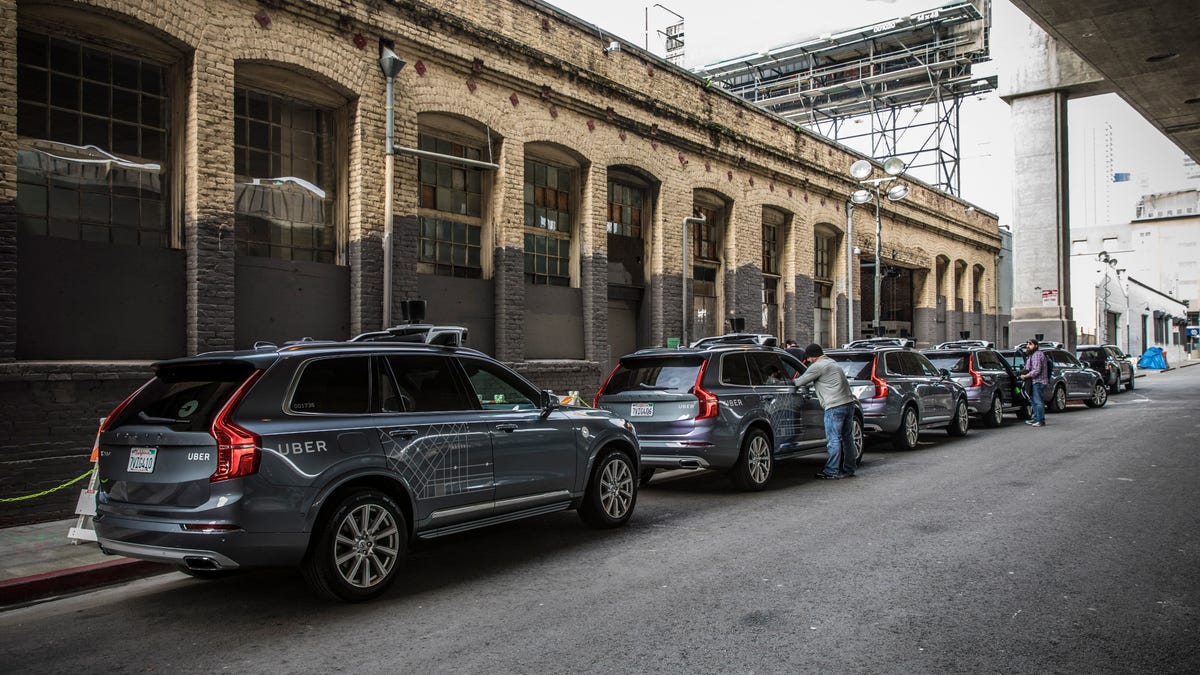Report contradicts Uber's explanation of robocar red light slip
After video showed an Uber self-driving car running a red light, the firm cited "human error" by the ride-along driver. But a report faults the autonomous tech.

A clutch of Uber robocars in San Francisco in December, before state regulators cracked down on the program.
Call it another pothole for Uber.
Remember that taxicab dash-cam video of an Uber robocar running a red light in San Francisco last December? (It's embedded below.) Uber -- which had put the self-driving cars on the streets without first getting a permit -- had said the screwup was due to "human error" and that it had suspended the driver who was riding along in the car.
But The New York Times says the autonomous-driving system was in fact to blame. The paper reported the news late Friday, citing two unnamed Uber employees, as well as internal company documents. The paper also said that "all told, the mapping programs used by Uber's cars failed to recognize six traffic lights in the San Francisco area."
Uber didn't respond to a request for comment on the Times report Saturday.
The news is yet another instance of bad PR for the company.
Uber didn't exactly win a blue ribbon for conscientiousness with its SF robo-rollout. California regulators subsequently yanked the registration of 16 of the cars, at which point Uber simply moved the program to Arizona.
Then there's the scandal that erupted last Sunday, when a former Uber engineer published a blog post detailing a chaotic companywide culture of sexism and unprofessional business practices. Uber has tapped former US Attorney General Eric Holder to lead an internal inquiry into the sexual harassment claims.
The company is also facing a lawsuit launched by Waymo, the autonomous-car company owned by Google's parent Alphabet. Filed this week, the suit alleges that Uber stole trade secrets related to Waymo's technology. Uber calls the claim "baseless."
And in January, Uber paid $20 million to settle charges by the Federal Trade Commission that the company misled drivers about how much money they could expect to make working for Uber.
Five of Uber's robocars eventually returned to the streets of San Francisco, also in January. The company has said, though, that the vehicles are for mapping purposes only and that they're being controlled by human drivers.
In any case, it's never a bad idea to look both ways before stepping off the curb.
CNET Magazine: Check out a sampling of the stories you'll find in CNET's newsstand edition.
Life, disrupted: In Europe, millions of refugees are still searching for a safe place to settle. Tech should be part of the solution. But is it? CNET investigates.

